In a set of stamping dies, more elastic materials need to be used, including springs of different specifications, urethane, nitrogen springs, etc., and different elastic materials are selected according to different needs. For bending and punching, you can use ordinary flat wire springs, such as brown springs, also known as brown springs; if the strength is not enough, add nitrogen springs, of course, the cost will be higher; Youli glue is generally used for stretching molds , plastic mold, or flatness.
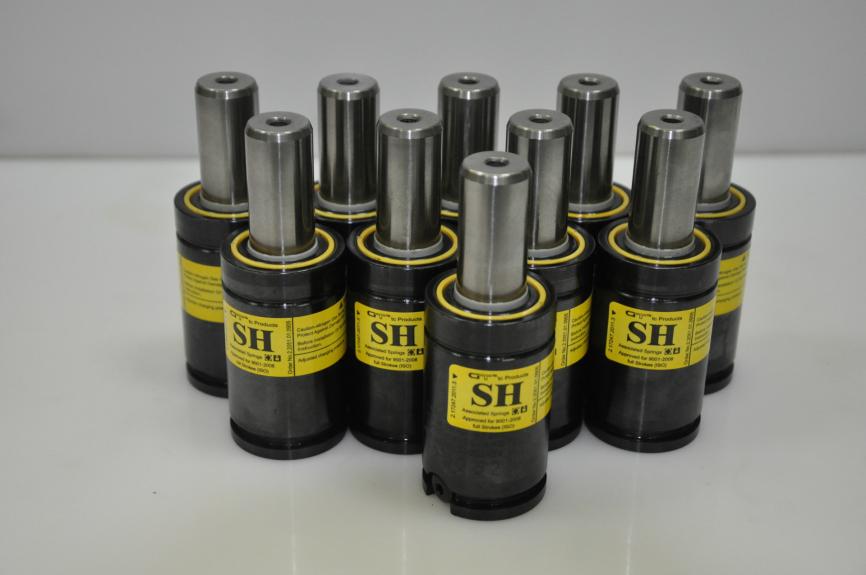
nitrogen gas spring
Youli glue is very good for deep drawing dies, of course nitrogen springs can also be used. Others such as jacking pins, floating blocks, dual-purpose pins, etc. generally use wire springs or yellow springs, as long as they can be stripped off, the product will not be pushed out of the print, and the top will be deformed. The characteristic of Youlijiao is that the strength is relatively balanced, but its life is relatively short, and it needs to be replaced after a period of use, so it is generally used less, and nitrogen springs are usually more commonly used. Uniform glue is used more for flatness.
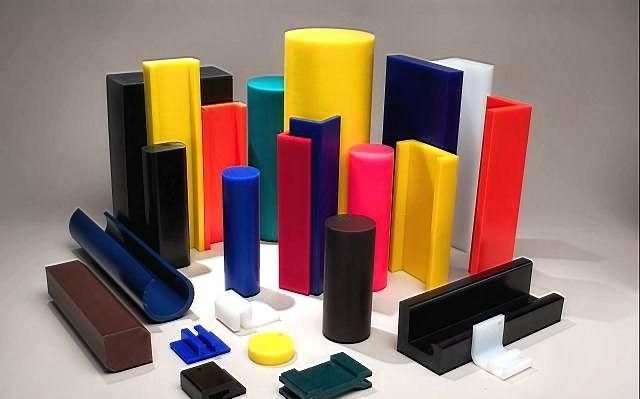
Youli glue
Springs include flat wire springs, wire springs, etc. The purpose of springs is to remove and press materials. The strength of the springs is related to whether the mold production is smooth and the products are qualified. If the spring force is small, it may cause various problems such as product deformation, mold not falling off, product not easy to take out from the mold, material carrying, knife edge, punch easy to wear and so on.
Flat wire springs are generally classified according to color: brown, green, red, blue, yellow, and the strength is also weakened in turn. Different colors have different strength and compression.
We use an empirical method to calculate the compression of the spring: measure the total height of the spring in advance, put the spring in a bench vise, lock it, and then use a caliper to measure the remaining length of the spring after it is clamped, and then use the total length of the spring to Subtract this number from the length, and then divide it by the total length. This method is common to any spring. For example, the length of the brown spring is 60mm. After being clamped by the vise, there should be about 45.6mm left, and then you can use 60mm to subtract 45.6mm It is equal to 14.4mm, and then divided by 14.4mm by 60mm, the result is equal to 24%, which is its compression amount.
Springs are produced according to different production times, such as 1 million times, 500,000 times, and 300,000 times. The larger the compression amount, the shorter the life of the spring and the shorter the life of the mold (of course, the spring can be replaced if it is broken). The spring may need to be replaced after a period of production, and the spring with poorer quality may be broken in the mold. Generally, the compression amount of the spring is calculated according to 300,000 times, that is to say, the spring needs to be replaced after the mold uses 300,000 times. Of course, the life of the general stamping die is not so long, and it can also be calculated according to the maximum compression amount. If so, it can only ensure that the spring will not be damaged in the mold. It is also good for the flatness of the product if the mold is pressed to death.
The specific compression amount is as follows:
Color | Service life | maximum compression |
brown spring | 1 million times 500,000 times 300,000 times | 16%/18%/20%/24% |
green spring | 19.20%/21.60%/24%/28% | |
red spring | 25.60%/28.80%/32%/38% | |
blue spring | 32%/36%/40%/48% | |
yellow spring | 40%/45%/50%/58% |
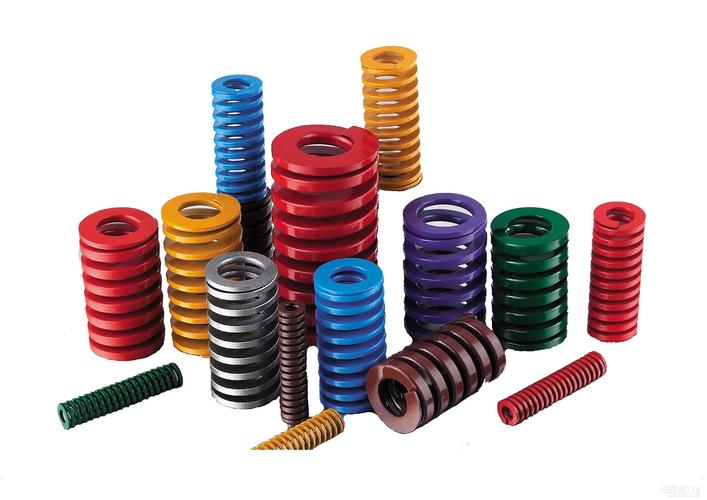
Die spring
Maximum compression (how much the spring can be pressed down), the maximum compression of the spring is equal to the free height of the spring multiplied by the maximum compression ratio of the spring, for example, a brown spring with a length of 60mm, then its maximum compression is: 60*24% It is approximately equal to 14. This spring can be pressed down by a maximum of 14 mm. Its maximum stroke is 14 mm. The stroke of the mold must be less than 14 mm. If it exceeds 14 mm, the spring will fail, deform and cannot be used, which will cause a series of problems.
Before the mold is assembled, that is, before the mold is installed, it is necessary to calculate whether the compression of the spring is appropriate, so that there is no need to worry about mold problems during the mold test.
The determination of the blanking gap value generally uses empirical formulas and charts.
Experienced stamping die fitters and stamping die designers, because of their rich experience, will have a better understanding of the material, size and appearance accuracy requirements of different products, as well as how to design molds to successfully produce qualified products, and how to reduce mold maintenance. The number of times, etc., when you get the product picture, you will know what the mold structure looks like, where are the key points and how to solve them.
The gap between the punch and the knife edge has a great influence on the quality of stamping parts and the life of stamping dies. Therefore, a reasonable gap must be designed when designing stamping dies to ensure that the cross-sectional quality and dimensional accuracy of stamping parts meet product requirements, reduce the required punching force, and increase the life of stamping dies. However, the reasonable gaps determined from the requirements of quality, stamping force, stamping die life, etc. are not the same value, but close to each other.
Considering the deviation in stamping die manufacturing and wear in use, usually only an appropriate range is selected as a reasonable gap in production. As long as the gap is within this range, good products can be punched out. During the production process of the stamping die, the gap will increase due to continuous wear and tear. When designing and manufacturing a new stamping die, the minimum reasonable gap value should be adopted.
Stamping die blanking gap, according to the factory master's experience in mold research and improvement for many years, parts with high requirements for dimensional accuracy and cross-section verticality should use smaller clearance values, and stamping products with low requirements for cross-section verticality and dimensional accuracy For parts, it should be mainly to reduce the punching force and improve the life of the stamping die, and a larger gap value can be used. Its value can be calculated according to the following empirical formula:
Soft Materials:
Material thickness t<1 mm, punching gap c=(3% ~ 4%)t
t = 1 ~ 3mm, c = (5% ~8%)t
t = 3 ~ 5mm ,c =(8% ~10%)t
Hard material:
t <1mm,c = ( 4% ~5% )t
t = 1 ~ 3mm, c = ( 6% ~8% )t
t = 3 ~ 8mm, c = ( 8% ~ 13%)t
The following is the theoretical knowledge in books, the main basis is to ensure that the upper and lower cracks meet in order to obtain a good section.
According to the relationship of triangle ABC, the gap value‘C’ can be obtained as:
c =( t – h0 ) tanβ = t (1-h0/t) tanβ
In the formula, h0——the cutting depth of the die; β——the angle between the direction of the maximum shear stress and the direction of the vertical line.
It can be seen from the above formula that the gap c is related to the material thickness t, the relative penetration depth h 0/t and the crack direction β. And h0 and β are related to material properties, the harder the material, the smaller h 0/t.
Therefore, the main factors affecting the gap value are the material properties and material thickness. The harder or thicker the material, the larger the gap value.
How to calculate the punch length?
First of all, let's study what is a punch? What role does the punch play in the stamping die?
The punch refers to the punch installed on the splint, which generally plays the role of punching, cutting, bending, step difference, convex hull, salad, sprouting, riveting studs, etc. These can be referred to as "punch" for short. .
The length of the "punch head" for punching is equal to: the thickness of the plywood + the thickness of the stop plate + the thickness of the stripper plate + the thickness of the material + (1 ~ 2) mm;
The length of the 90-degree bending punch is equal to: the thickness of the splint + the thickness of the stop plate + the thickness of the stripper plate + the thickness of the material plus (1 ~ 2) mm, it is enough, and it can be adjusted according to the need during the mold test; other There is generally a certain angle in front of the bending punch of the angle. When calculating, it should be flexibly applied and calculated reasonably according to the angle.
The length of the punch for making a step difference is equal to: the thickness of the splint + the thickness of the stop plate + the thickness of the stripper plate + the height of the step difference.
The composite mold refers to the mold that completes multiple stamping processes in one stroke of the punching machine. The processes that can use the composite mold structure include: flat blanking, blanking, cutting, bending, forming, shaping, stretching, upsetting, extrusion, flanging, etc., which can be flexibly selected according to actual needs. Generally, less than 4 processes can be selected, too many will make the mold manufacturing difficult, the mold strength will decrease, and it will be easily damaged, resulting in an increase in the frequency of mold repairs and an increase in mold costs. The use of composite mold production can improve the accuracy of the product and improve production efficiency.
For example: For example, punching a gasket can be completed by punching and blanking with two sets of molds respectively. Punching is to punch the hole in the middle, and blanking is to punch out the shape; mold. There are also stretching, trimming, etc. in the single-step mold. As long as one mold completes two or more steps at a time, it is called a composite mold.
Due to the different process combinations of composite molds, the stripping devices are also different. When I have time, I will share some common composite mold structures with you.
The structure of the blanking or upward bending compound die: the punch (also known as the male die or punch) is designed on the lower die, and the other templates are the lower splint (fixed punch punch), the lower stop plate and the lower die. The stripping plate (external stripping), the upper mold is composed of the master mold (or knife edge), the inner stripping plate and the upper backing plate in turn, the inner stripping is hung on the upper backing plate with a contour sleeve, and then it is supported by a rod or a spring .
For the composite mold used for blanking, it is generally enough to pull out 0.50mm from the master mold, and it cannot be lower than the master mold, otherwise the knife edge of the master mold is easy to collapse or not to fall off. The force of the internal pull-off must be strong enough to push the product out of the master mold. Generally, if the material is relatively thick, we install nitrogen springs on it.
Composite mold belongs to a kind of mold structure, and it can be classified as engineering mold, because it is used more in engineering molds, and generally the entire engineering mold adopts composite mold structure.
The upward forming, upward bending, upward convex hull, upward convex point and upward warping angle of the continuous mold generally adopt the compound mold structure.
I received a question from a classmate today, saying: Should the punch be higher than the plate when punching the convex hull of the composite mold?
The answer is yes, how to punch the convex hull if it is not higher than the stripper plate?
It is suggested that this student review carefully what is a composite model? How to calculate the punch length? Once you figure this out, you will naturally understand how to answer this question.
When the composite mold structure punches the convex hull, the length of the punch is equal to: the thickness of the splint + the thickness of the stop plate + the thickness of the stripper plate + the height of the convex hull.
That is, when punching, when the mold is killed on the punching machine, the punch must be higher than the stripper plate, how much higher? Of course, as high as the convex hull requirement is, it must be as high as possible here, and it must be within the allowable accuracy range of the convex hull height requirement.
When the mold is opened and the mold is opened, and the mold does not bear any force, the convex punch must be shorter than the stripper plate and retracted into the stripper plate, otherwise the stripping stroke must be increased.
When punching the convex hull of the composite mold, when the mold is punched down, the stripper must first press the material, and the pressing force must be sufficient, and then punch the convex hull, otherwise the product may be deformed and the convex hull size may be unstable.
General stamping dies are made of:
Upper and lower pallets, upper and lower feet, and upper and lower mold bases: generally made of "soft materials" such as A3 and Q235, which support the entire mold, facilitate mold setting, and blanking.
Upper and lower templates: The upper and lower templates play the role of fixing the knife edge, inserting the block, inserting the insert, and ejecting pins. The hardness requirements of the upper and lower templates must be around HRC58~62. If the hardness is too low, it will affect the punching quality. The thickness is generally 25-40mm. Some cutting edges are directly cut on the template, that is, the cutting edge is directly dug on the template. In this way, if the cutting edge is missing, broken, worn, or has burrs, it is not easy to repair the mold; another method is to dig into the block, That is, the edge of the knife is dug on a block (the block is customarily called "the edge of the lower die"), and then the edge of the lower die is loaded into the lower template. The height should be as high as the lower template, and the error should be within plus or minus 1 to 2, preferably within plus or minus 0.005mm, which can be achieved by a general grinder or fitter. Too much will print the product out (mold).
The upper and lower backing plates are generally made of Cr12. According to the needs, the thickness of the upper and lower backing plates of each set of molds is different. It depends on the punching force. If there are few holes punched, the upper and lower backing plates can be made a little thinner by 8-10mm. Appropriately make it thicker, generally about 17-20mm. The lower backing plate is mainly blanking hole, spring hole, screw hole, guide post ventilation hole, etc.
Upper and lower splints, the upper and lower splints are mainly used to fix punches, punches, and guide posts, generally 17-20mm. The material hardness of the stamping die splint generally does not need to be particularly high. Generally, soft materials can be used, but it is not good if it is too soft. Therefore, in the design of stamping dies, it is necessary to consider the structure of the die, the selection of die materials, the tonnage of the selected punching machine, the size of the punching gap, etc. from the punching process of the workpiece to be president, so as to make the burr of the processed workpiece smaller , Extend the service life of the mold.
For stop plate, stripper plate, etc., Cr12 is enough for the stop plate, but hard material such as Cr12Mov must be used for the stripper plate. The stop plate and the stripper plate are locked together by M6 or M8 screws and then locked together. There are mainly some holes on the stop plate, punch holes, guide post holes, etc. The stripping plate mainly plays the role of stripping, pressing, and guiding the punch. Generally, we use a stripper to guide the punch, guide post and punch. In the production of aluminum materials, because aluminum scraps are easy to jump into the stripping plate, the punch will be scratched, or the punch will be stuck, the punch will be broken, and the punch will be pulled out of the stripping plate, etc., so a stopper must be used to guide the punch , and the stripper plate is appropriately enlarged by 10 to 20 strips on one side; or the stripper plate is made of two sections, the upper section is used for guiding, and the lower section is also unilaterally enlarged by 10 to 20 strips. The general thickness of the stop plate is 8-17 mm, which is also based on the number of punching holes and the force to be received; the general thickness of the stripper plate is 20-25 mm.
Dies, punches, also known as punches or knife edges, are used to punch off, cut off, or cut, puncture, and stretch excess material. Such as: stretching punch, bending punch, inserting knife for slider, punch for salad, punch for convex hull, budding punch, riveting punch for riveting die, etc. . The material of the die and punch needs to have a high hardness. The commonly used materials for the die and punch are: Cr12Mo1v1, Cr12Mov, Skd-51, Skd-11, W6Mo5Cr4V2 (tungsten steel), etc.
Explanation of technical terms:
Digging: It is a customary name for people who make molds, which means the wire cutting frame. For example: digging knife edge, digging into blocks, etc.
Soft material: In the stamping die, it refers to the die steel with a hardness of about HRC35 and relatively low hardness, such as 45# steel, A3, Q235, etc. You can knock a hole on it with something with a slightly higher hardness. This kind of material is very soft, so it is used to be called "soft material", because its shock resistance is better, and it is generally used to make stamping. The upper and lower pallets, upper and lower feet, and upper and lower mold bases of the mold.
Hard material: In the stamping die, it refers to the die steel material with a hardness (after heat treatment) of about HRC58-62 or above, such as: Cr12, Cr12Mo1v1, Cr12Mov, Skd-51, Skd-11, W6Mo5Cr4V2 (tungsten steel), these The hardness of the steel material is very high (but it is also relatively brittle, and a piece may be broken by you if you are not careful, 55).
Three views of stamping die, do you understand? Whether it is a stamping die fitter, or a stamping die design, or NC operation, NC programming, grinding machine, milling machine, etc., as long as it is related to mechanical processing, you must have the ability to read and understand pictures. Essential, if you can't even understand the picture, how can you process the parts?
View: The geometric pattern obtained by viewing an object from various directions.
Example: When an object is placed in front of you:
1. Viewed from the front, the obtained geometric figure is called the front view; viewed from the rear, the obtained geometric figure is called the rear view;
2. Viewed from the left side, the resulting geometry is called the left view; viewed from the right side, the resulting geometry is called the right view;
3. Looking from top to bottom, the geometric figure obtained is called top view, and viewed from bottom to top, the resulting geometric figure is called bottom view;
4. In order to make the graphic expression more accurate, more understandable and easy to understand, sometimes it is necessary to draw sectional views, full sectional views, half sectional views, sectional views, etc. Sectional view is to cut it open, the figure you see; full section view: it is the figure obtained by cutting it all; Imagine that the object breaks from here, and then graphically express the view you see after the break, which is the cross-sectional view.
There is a picture below, I believe you can understand after looking at it:
Can you draw the geometry expressed by these views in a three-dimensional way?
Let's talk about three views.
The basic rules of the three views: the length is aligned, the width is aligned, and the height is equal.
Long Justification - The length justification of the front and top views.
Equal Width—The width of the top view and the left and right views are equal.
Alignment - Height alignment (equal) of main view, left view, right view.
The following information is what I found in other places, I hope it can be helpful to your study.
 CNC Router Machinery: Unveiling the Core of Modern ManufacturingNovember 2, 2023Are you ready to explore the cutting-edge world of CNC router machinery? Whether you are a seasoned professional in the field or someone just getting started, this comprehensive guide will equip you with the knowledge you need to harness the full potential of CNC router machinery. From understanding the fundamentals to exploring innovative services, let's dive in and take your CNC router experience to the next level.view
CNC Router Machinery: Unveiling the Core of Modern ManufacturingNovember 2, 2023Are you ready to explore the cutting-edge world of CNC router machinery? Whether you are a seasoned professional in the field or someone just getting started, this comprehensive guide will equip you with the knowledge you need to harness the full potential of CNC router machinery. From understanding the fundamentals to exploring innovative services, let's dive in and take your CNC router experience to the next level.view Different Types of Bearings: Their Distinctive Features and Diverse UsesMay 28, 2024Learn about the importance of mechanical bearings, different types, and how to choose the right one for your needs. Explore applications in various fields and factors to consider for smooth and precise motions.view
Different Types of Bearings: Their Distinctive Features and Diverse UsesMay 28, 2024Learn about the importance of mechanical bearings, different types, and how to choose the right one for your needs. Explore applications in various fields and factors to consider for smooth and precise motions.view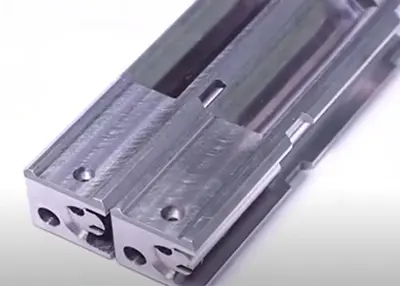 Nine Methods Of Metal Surface Treatment ProcessJune 21, 2022Metal surface treatmentIn order to improve the appearance, texture, function and other properties of metal surface treatment products, it is usually necessary to treat the metal surface. The so-called...view
Nine Methods Of Metal Surface Treatment ProcessJune 21, 2022Metal surface treatmentIn order to improve the appearance, texture, function and other properties of metal surface treatment products, it is usually necessary to treat the metal surface. The so-called...view 10 Common Metal Materials for CNC Machining & Typical UsesApril 12, 2024Here are 10 common metal materials for CNC machining and their typical uses. Read on and get useful suggestions on how to select suitable metal materials for your project.view
10 Common Metal Materials for CNC Machining & Typical UsesApril 12, 2024Here are 10 common metal materials for CNC machining and their typical uses. Read on and get useful suggestions on how to select suitable metal materials for your project.view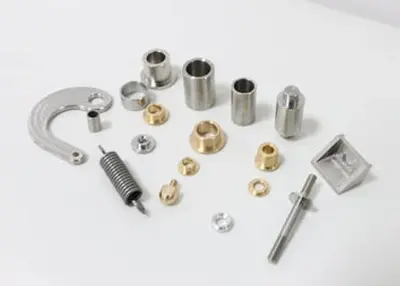 Fasteners 101: Common Types of Automotive FastenersAugust 24, 2023Automotive fasteners are an essential component in the construction and maintenance of vehicles. As a result, automotive part manufacturing relies on high-tolerance designs that include connecting mec...view
Fasteners 101: Common Types of Automotive FastenersAugust 24, 2023Automotive fasteners are an essential component in the construction and maintenance of vehicles. As a result, automotive part manufacturing relies on high-tolerance designs that include connecting mec...view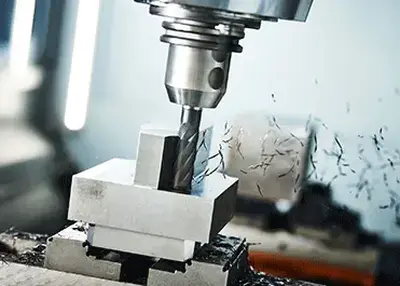 Exploring the World of High-Speed MachiningNovember 22, 2023In the ever-evolving landscape of manufacturing, the pursuit of efficiency and precision has led us to the realm of High-Speed Machining (HSM).view
Exploring the World of High-Speed MachiningNovember 22, 2023In the ever-evolving landscape of manufacturing, the pursuit of efficiency and precision has led us to the realm of High-Speed Machining (HSM).view